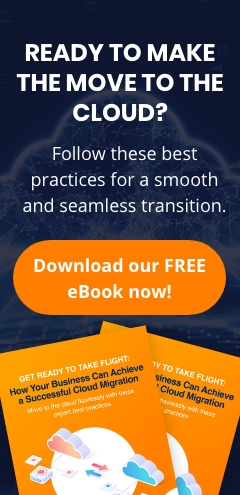Partnering with a managed IT services provider (MSP) helps small businesses improve efficiency, reduce downtime, and strengthen cybersecurity, but these big benefits require big changes to your IT. While the idea of revamping your IT operations may seem daunting at first, a professional provider will have a clear, structured onboarding process that minimizes disruption and sets the stage for long-term success.
This guide outlines what businesses like yours can generally expect during the onboarding phase, from initial assessment to implementation to ongoing support.
Initial discovery and consultation
The onboarding journey typically begins with a discovery meeting. During this phase, the MSP gathers essential information about your business’s current IT environment, operational needs, growth goals, and any existing challenges. This consultation allows the provider to tailor their services and support model to meet the specific needs of your business.
They will need key information from you, including:
- Current hardware and software usage
- Number of employees and devices
- Security concerns or recent incidents
- Future technology plans or upgrades
With this insight, they can better align their services and solutions with your day-to-day operations and long-term goals.
Network assessment and IT audit
Once initial discussions are complete, the MSP conducts a detailed audit of your business’s existing IT infrastructure. This technical evaluation gives a clear picture of what systems are in place and where vulnerabilities or inefficiencies may exist.
The MSP will inspect, if applicable, your:
- Network layout and performance
- Server and workstation status
- Antivirus and firewall configurations
- Data backup and recovery procedures
- Software licenses
- Compliance tools and policies
The data they collect will help the MSP craft tailored recommendations for improvements or updates.
Strategic planning and recommendations
Following the audit, the MSP will present to you a customized IT strategy that outlines the steps needed to address existing issues, improve operations, and align IT resources with your business goals.
The strategy serves as an IT roadmap for implementation, covering short- and long-term projects and improvements that are months or even years from being finished. Because MSPs benefit from your long-term success, don’t be surprised if they think well ahead to ensure a long-term, mutually beneficial partnership.
Implementation and system setup
With a strategy in place, the MSP then begins installing and configuring the required solutions. This may involve configuring network settings, setting up remote monitoring software, rolling out endpoint protection, and updating or replacing outdated hardware or software.
To ensure a smooth transition, the MSP will need to coordinate with both your internal staff and third-party vendors to reduce disruptions during the implementation phase. The duration and scope of the work depends entirely on your needs, your operations, and your SLA with your provider.
IT documentation and access management
Accurate documentation is a core part of managed IT services. That’s why your MSP will create and maintain a detailed inventory of your IT environment, including network configurations, user credentials, software licenses, and vendor contact details.
Having comprehensive documentation helps ensure fast response times during support requests and lays the groundwork for consistent service over time. You will also have access to this documentation for better decision-making, but be sure to limit use to authorized individuals to maintain security.
Training and ongoing support
After systems are in place, the MSP will introduce you and your workforce to the tools and processes for accessing IT support. Their staff will provide training to ensure your employees know how to request assistance, use new software, or follow security protocols.
Your MSP will also explain the services they will be providing in the future and how to access them, which typically include:
- 24/7 help desk support
- Regular maintenance and monitoring
- Proactive patch management and updates
- Periodic performance reviews and strategy check-ins
Ready to take the lead and supercharge your productivity and profitability with managed IT services? Contact outsourceIT for a free consultation, and our team will explain our onboarding process and how it will help your business achieve greater efficiency and success in your industry.

